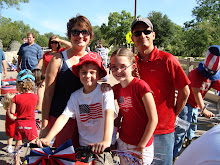Chipboard
Things to Consider
Scrapbookers and paper crafters define chipboard as the hottest and most useful product on the market. It is made entirely from wastepaper, yet it is the perfect medium for trying new techniques. The Chipboard Book is filled with creative and fun ideas such as chalking, distressing layering and many, many more using this inexpensive product.
Our opening assignment this month is to start off by wandering through The Chipboard Book looking for flowers. The flowers could be made from chipboard, an actual silk flower or simply an image of a flower. Look and see how the artist used the flower in the layout or mini album? Is the project for a boy or a girl? The goal in this assignment is to get you to see how to use this embellishment on your layouts.
The first section of the book is all about letters and numbers. Commonly, if you purchase a package of letters you always end up with many of the same letters left over. Think of some ways to use these left over letters. Share you ideas with the group. Most likely they have the same letters left over.
On the opposite end of this problem would be what to do when you don’t have the exact letters that you need to finish a layout. How do you solve this problem? List 3 ways you have accomplished this or better yet, bring in an example of when you have had to do this and share the finished result with the group.
1. ______________________________________________________
2. ______________________________________________________
3. ______________________________________________________
Several pages throughout the book involve covering chipboard letters with paper. Adhering the paper can become a little tricky. An excellent product for this is a Xyron. Trace the letter backwards on the back of the paper and then run the piece through the Xyron before cutting it out. Cut the shape out and Viola! You now have the entire shape covered with adhesive, ready to place on the chipboard.
Another technique that was mentioned was sanding the edges of the chipboard. How do you get into the center of chipboard letters? An easy solution to this is to cover a pencil with red-line tape and adhere a 220 grit sandpaper around the pencil. This will allow you easy access to those hard to reach centers. Create a sandpaper pencil this month and bring it to the next meeting.
Page 20 – This page features a chart that shows the thickness of chipboard commonly found in the scrapbooking market today. Use this guide to help you select the perfect chipboard for your next project:
Lightweight – Typically comes with paper in shipping to keep the edges from getting bent. Great for most projects and easy to cut.
60 pt. - Perfect for a flap on a layout (see DAD layout on page 23). A little stronger than the lightweight, yet still easy to work with.
80 pt. – mid-weight
100 pt. – Excellent to use to create an altered board book
130 pt. – Great for the spine of an album (See example on page 30)
Page 23 – Jennifer Otto created a unique star ornament out of chipboard. Think of other shapes you could create and use as ornaments. How could you incorporate a picture on the chipboard other than the way it is shown here?
Page 29 – The special technique mentioned on this page talks about how some lightweight chipboards can go through a standard printer. Try this technique this month at home. Remember to set your printer setting to heavy paper. It also mentions several sites to download dingbats and fonts. What is a favorite font of yours? Why do you like this one? Do you have a favorite site to download fonts? Are you comfortable in installing fonts to your computer?
A couple of month’s ago one of the kits included a white Sharpie marker. It is an extremely popular tool. Have you played with yours yet? Is it something you are comfortable in using? Why or why not? Look through the book and list all the pages that you found where a marker had been used. Doing this activity might help you to think of additional ways to use the marker.
1. ___________________________________ page _________
2. ___________________________________ page _________
3. ___________________________________ page _________
Challenge:
Page 11 features a list of techniques to try with chipboard. Your challenge this month is to incorporate at least 2 of these techniques into a layout/card/mini-album that you have not previously tried before. Remember that the goal of the book club is to get you to try new things and step outside your comfort zone while at the same time making that never ending pile of photos smaller.
Happy Scrapbooking!
|


<< Home